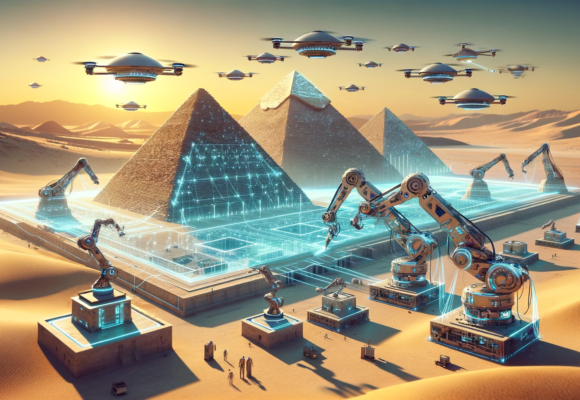As a professional in the fields of archaeology, prediction, and data analysis, approaching the question of whether Artificial Intelligence (AI) could replicate the pyramids of Egypt involves considering various dimensions: technological capabilities, historical construction knowledge, and the integration of AI with robotics and engineering.
Technological Feasibility
From a purely technological standpoint, AI has the potential to significantly contribute to a project aiming to replicate the Egyptian pyramids. AI can assist in several critical aspects:
- Design and Planning: AI can analyze the architectural features and construction techniques of the original pyramids. Through machine learning algorithms trained on existing archaeological data, AI could potentially recreate detailed plans that mirror the construction logic and methods used by the ancient Egyptians.
- Material Analysis and Procurement: AI can aid in identifying and sourcing materials that match or closely resemble those used in the original constructions, considering factors like durability, availability, and environmental impact.
- Logistics and Construction Management: AI could optimize the logistics of such a monumental project, from scheduling the delivery of materials to managing the workforce. Predictive analytics could foresee and mitigate potential delays or resource shortages.
Historical and Cultural Considerations
However, replicating the pyramids is not just a matter of technological capability but also involves understanding the historical, cultural, and human elements that contributed to their original construction:
- Construction Techniques: While AI can suggest methods that are technologically advanced and efficient, the original pyramids were built with ancient techniques that involved a significant amount of human labor and simple tools. Replicating these methods would require a deliberate choice to use or simulate ancient construction practices, which might not align with modern efficiency or safety standards.
- Cultural Significance: The pyramids were built with a deep cultural and religious significance for the ancient Egyptians. Any attempt to replicate these structures would need to consider and respect their symbolic meanings, something that AI, as of now, cannot fully comprehend or replicate.
Integration of AI with Robotics and Engineering
For a physical replication of the pyramids:
- Robotics: AI could be integrated with robotics to perform tasks such as cutting and transporting stone, potentially simulating the manual labor that would have been involved in the ancient construction process. However, achieving the precision and scale seen in the pyramids with current robotic technology would be a significant challenge.
- Engineering Innovations: Modern engineering, guided by AI, could offer methods to replicate the pyramids more safely and efficiently than ancient techniques. However, this raises the question of whether the goal is to replicate the process or merely the end result.
Conclusion
In summary, while AI, combined with advancements in robotics and engineering, could technically contribute to a project aiming to replicate the Egyptian pyramids, such an endeavor would face significant challenges beyond mere technological capabilities. It would require a nuanced understanding of ancient construction techniques, cultural significance, and ethical considerations. The replication of the pyramids, therefore, stands as much as a testament to human ingenuity and cultural respect as it does to technological prowess.


 21 Feb 2024
21 Feb 2024
 Posted by Watchdog Ent.
Posted by Watchdog Ent.  0 Comment
0 Comment 









